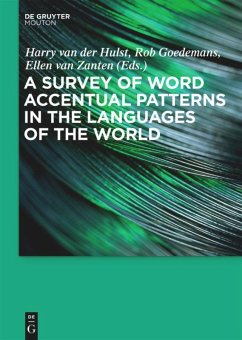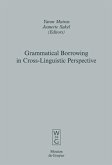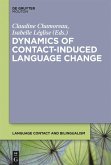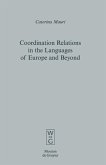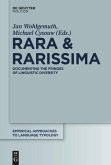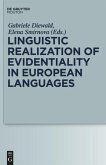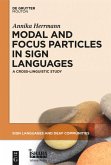In part I of this volume, experts on various language areas provide surveys of word stress/accent systems of as many languages in 'their' part of the world as they could lay their hands on. No preconditions (theoretical or otherwise) were set, but the authors were encouraged to use the StressTyp data in their chapters.
Australian Languages (Rob Goedemans), Austronesian Languages (Ellen van Zanten, Ruben Stoel and Bert Remijsen), Papuan Languages (Ellen van Zanten and Philomena Dol), North American Languages (Keren Rice), South American Languages (Sergio Meira and Leo Wetzels), African Languages (Laura Downing), European Languages (Harry van der Hulst), Asian Languages (Harry van der Hulst and René Schiering), Middle Eastern Languages (Harry van der Hulst and Sam Hellmuth).
There is an introductory chapter (Chapter 1) that will provide the reader with elementary terminology and theoretical tools to understand the variety of accentual systems that will be discussed in the subsequent chapters of this book. Chapter 2 has a double function. It presents an overview of stress patterns in Australian languages, but at the same time it is intended to (re-)familiarize readers with the coding, terminology and theoretical ideas of the StressTyp database. Chapter 11 presents statistical and typological information from the StressTyp database. Part II of this volume contains 'language profiles' which are, for each of the 511 languages contained in StressTyp (in 2009), extracts from the information that is contained in the database.
This volume will be of interest to people in the field of theoretical phonology and language typology. It will function as a reference work for these groups of researchers, but also, more generally, for people working on syntax and other fields of linguistics, who might wish to know certain basic facts about the distribution of word accent systems
Australian Languages (Rob Goedemans), Austronesian Languages (Ellen van Zanten, Ruben Stoel and Bert Remijsen), Papuan Languages (Ellen van Zanten and Philomena Dol), North American Languages (Keren Rice), South American Languages (Sergio Meira and Leo Wetzels), African Languages (Laura Downing), European Languages (Harry van der Hulst), Asian Languages (Harry van der Hulst and René Schiering), Middle Eastern Languages (Harry van der Hulst and Sam Hellmuth).
There is an introductory chapter (Chapter 1) that will provide the reader with elementary terminology and theoretical tools to understand the variety of accentual systems that will be discussed in the subsequent chapters of this book. Chapter 2 has a double function. It presents an overview of stress patterns in Australian languages, but at the same time it is intended to (re-)familiarize readers with the coding, terminology and theoretical ideas of the StressTyp database. Chapter 11 presents statistical and typological information from the StressTyp database. Part II of this volume contains 'language profiles' which are, for each of the 511 languages contained in StressTyp (in 2009), extracts from the information that is contained in the database.
This volume will be of interest to people in the field of theoretical phonology and language typology. It will function as a reference work for these groups of researchers, but also, more generally, for people working on syntax and other fields of linguistics, who might wish to know certain basic facts about the distribution of word accent systems
"This book will introduce StressTyp to a much wider audience, and in turn will likely inspire more typological research on the world' s stress systems. It will also serve as an excellent reference since there is a lot of data included." (Mary Paster, Assistant Professor of Linguistics and Cognitive Science,Pomona College)
"A Survey of Word Accentual Patterns in the Languages of the World might well be unrivaled thus as *the* place to begin a study of stress in the world's languages."
Karen Steffen Chung in: Linguist List 23.1573
"This book will introduce StressTyp to a much wider audience, and in turn will likely inspire more typological research on the world's stress systems. It will also serve as an excellent reference since there is a lot of data included."
Mary Paster, Assistant Professor of Linguistics and Cognitive Science,
Pomona College
Karen Steffen Chung in: Linguist List 23.1573
"This book will introduce StressTyp to a much wider audience, and in turn will likely inspire more typological research on the world's stress systems. It will also serve as an excellent reference since there is a lot of data included."
Mary Paster, Assistant Professor of Linguistics and Cognitive Science,
Pomona College
"A Survey of Word Accentual Patterns in the Languages of the World might well be unrivaled thus as _the_ place to begin a study of stress in the world's languages."
Karen Steffen Chung in: Linguist List 23.1573
"This book will introduce StressTyp to a much wider audience, and in turn will likely inspire more typological research on the world's stress systems. It will also serve as an excellent reference since there is a lot of data included."
Mary Paster, Assistant Professor of Linguistics and Cognitive Science,
Pomona College
Karen Steffen Chung in: Linguist List 23.1573
"This book will introduce StressTyp to a much wider audience, and in turn will likely inspire more typological research on the world's stress systems. It will also serve as an excellent reference since there is a lot of data included."
Mary Paster, Assistant Professor of Linguistics and Cognitive Science,
Pomona College

